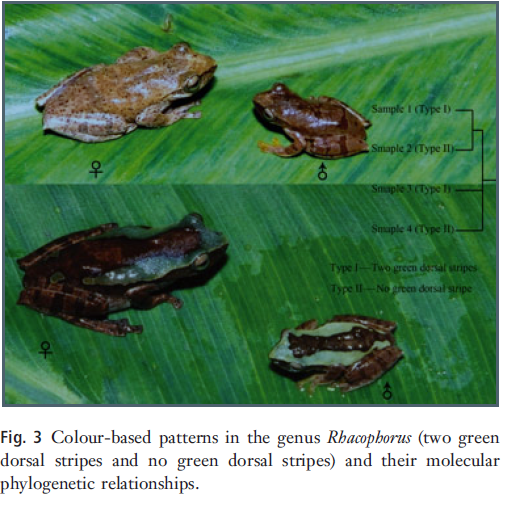The treefrog genus Rhacophorus Kuhl & Van Hasselt, 1822, which is widely distributed across India, China, Japan, mainland South-east Asia, the Greater Sunda Islands and the Philippines, contains 80 species , which renders it the largest genus in the Rhacophoridae . These frogs are commonly referred to as parachuting or flying frogs because some species possess extensive digital webbing, which serves as parachutes when escaping predators .
Some species also have dermal extensions on their forearms and legs. However, not all treefrogs in this genus are arboreal and not all possess extensive digital webbing. Some species live in swamps or shrubby habitats. Species of Rhacophorus exhibit interesting reproductive modes. Eggs are deposited in self-produced foam nests, a strategy that may have evolved once only within the family Rhacophoridae.
The treefrog genus Rhacophorus, a large genus with 80 species, has a wide range, occurring eastward from India to China, Japan, South-east Asia, the Greater Sunda Islands and the Philippines. The phylogenetic relationships and taxonomic recognition of many species are very controversial. To stabilize the taxonomy, the phylogenetic relationships among about 52 species are investigated from 96 samples using mtDNA sequence data.
Matrilineal relationships based on maximum likelihood and Bayesian inference methods resolve three well-supported lineages (A, B and C), although the phylogenetic relationships among three
lineages remain ambiguous. Analyses support recognition of two previously assigned subgenera, Leptomantis and Rhacophorus, and these correspond to lineages A and B, respectively.
Given that researchers from Kunming Institute of Zoology and Chengdu Institute of Biology, the Chinese Academy of Sciences have three strongly supported lineages, that these lineages are morphologically distinct, and the constrained geographic distributions of these groups, researchers recognize each lineage as a taxon. Subgenus Leptomantis includes species mainly from Malaysia, Indonesia and the Philippines. Subgenus Rhacophorus contains a mix of species occurring in India, Indochina and southern China.
Lineage C accommodates species distributed mostly in East Asia, including Japan and China. Based on genetic and morphological data from type localities, the taxonomic recognition of some species needs to bereconsidered. Rhacophorus pingbianensis and Polypedates spinus are considered as junior synonyms of Rhacophorus duboisi. Specimens of Rhacophorus rhodopus from Vietnam and Hainan,China likely represent an undescribed, cryptic species.

